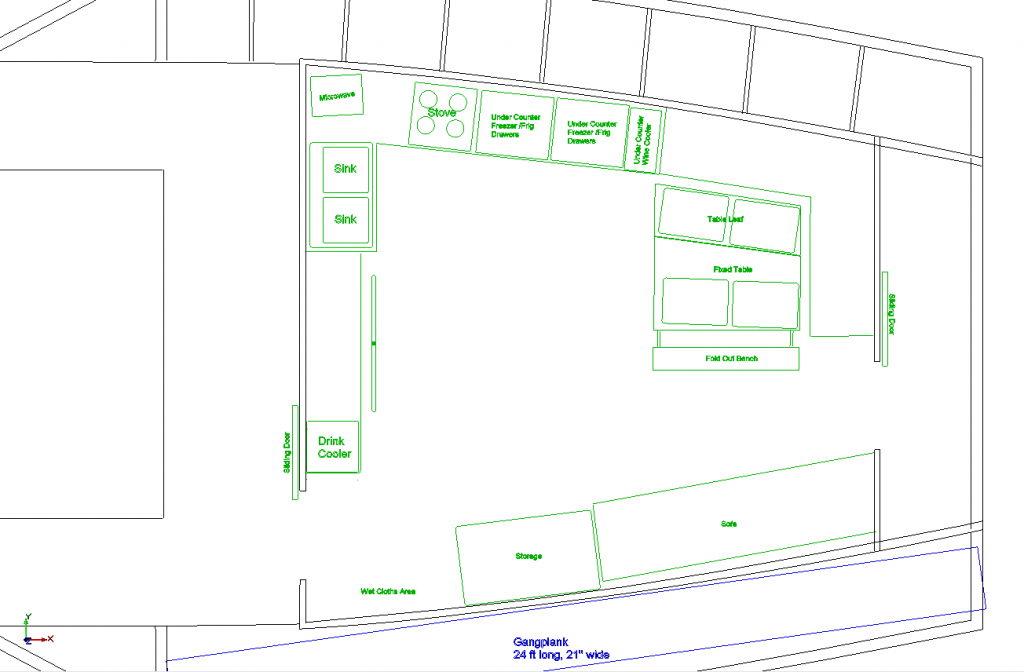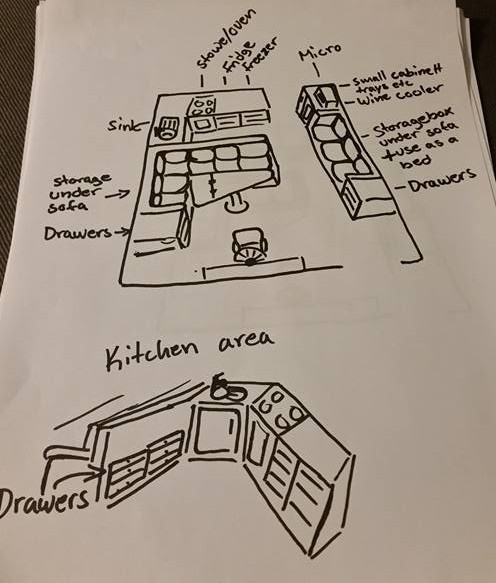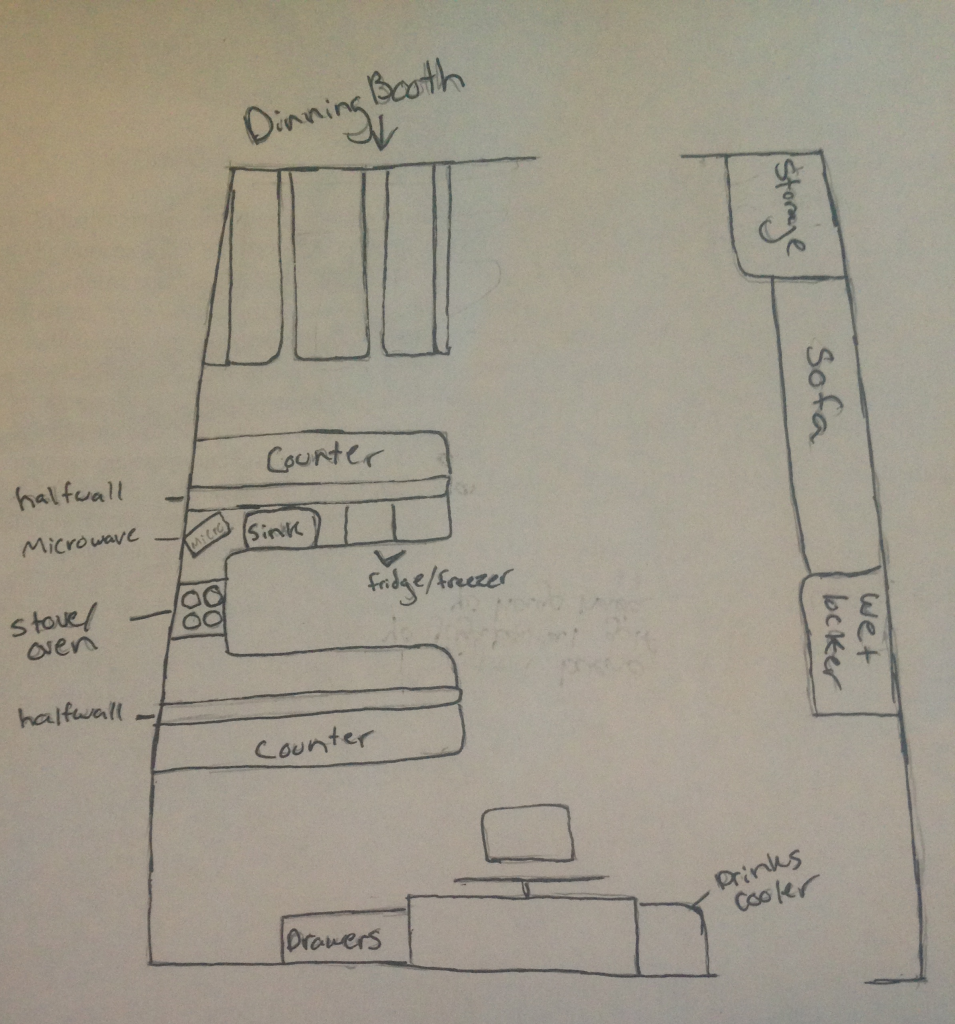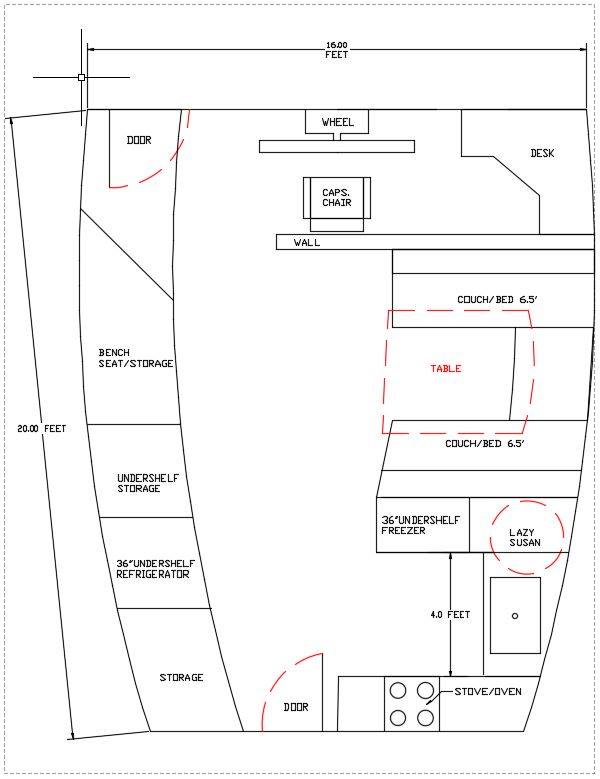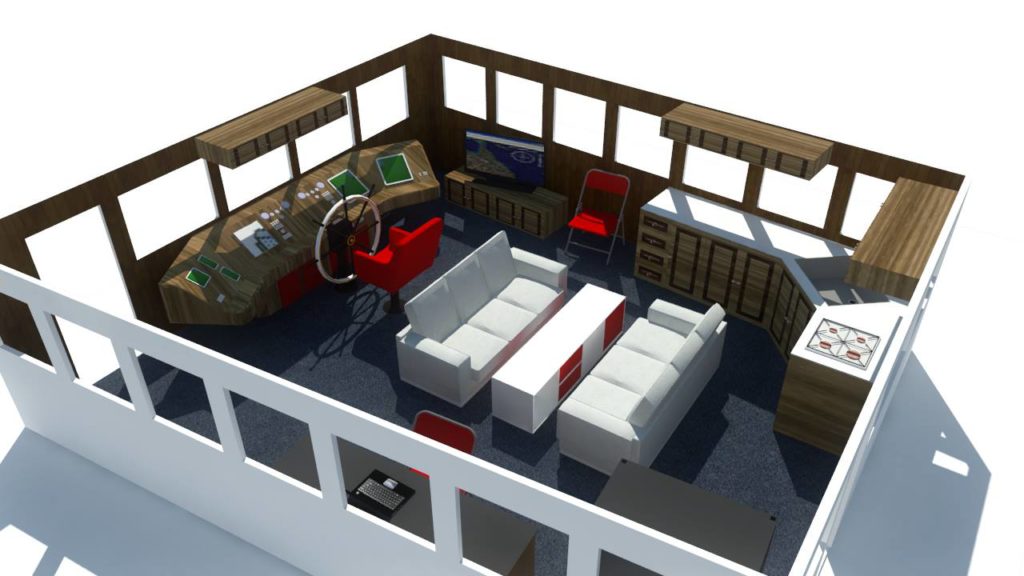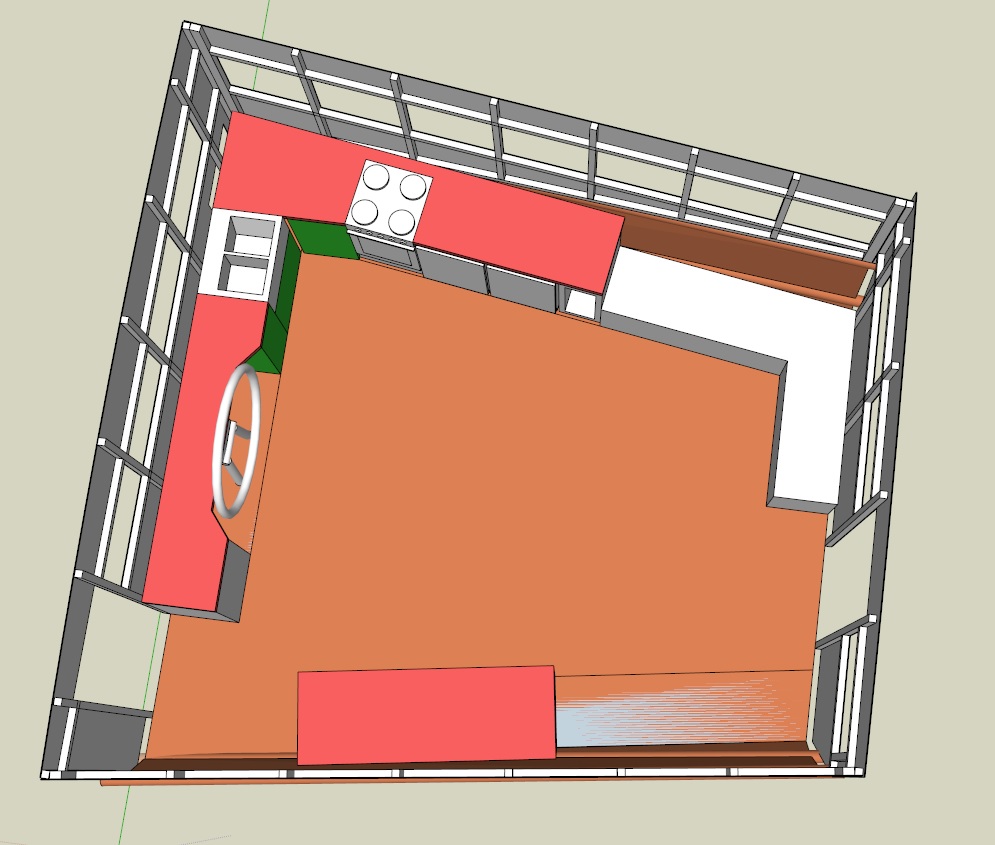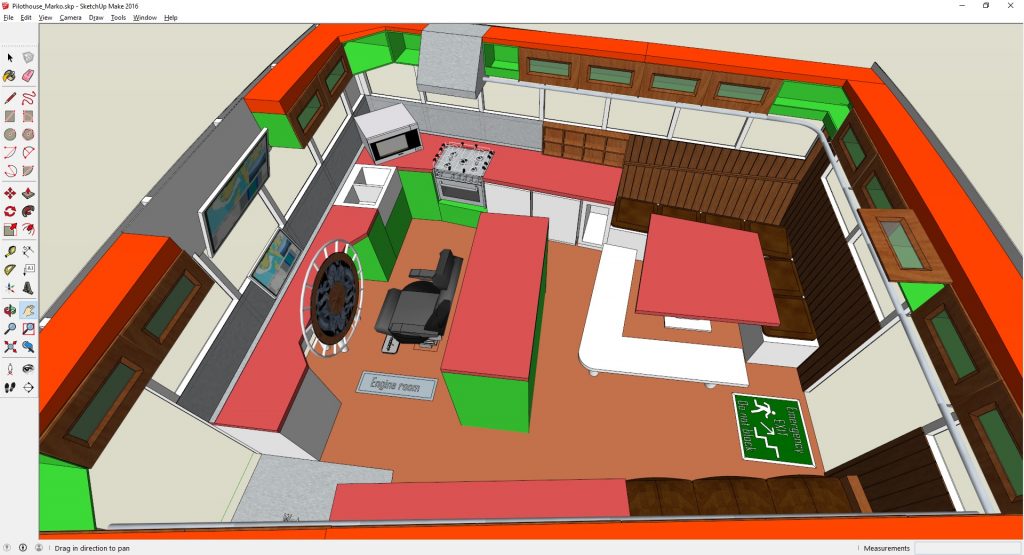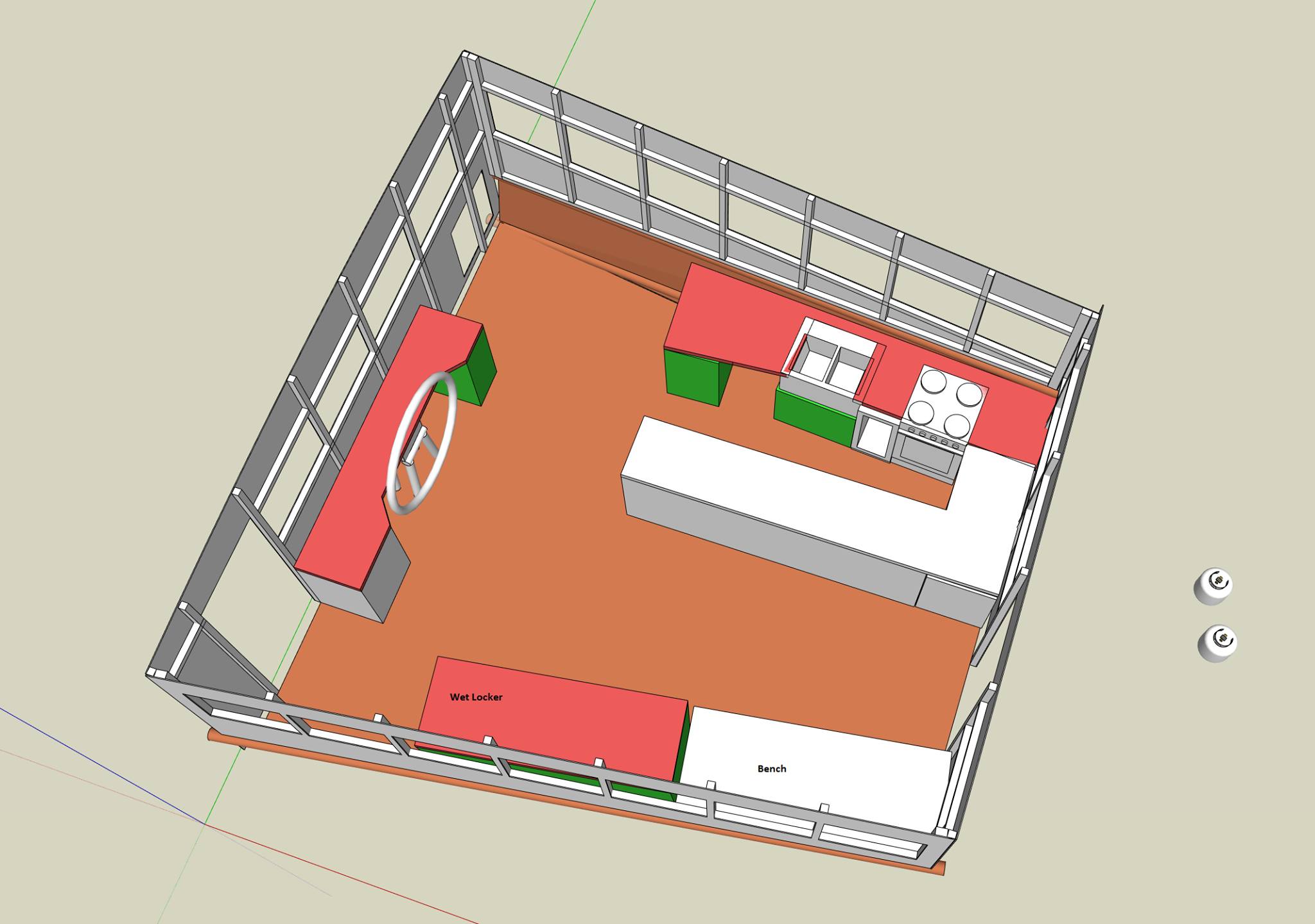The pilot house is about 16 ft wide and 20 ft fore to aft and will be constructed from 1/4″ 5000 series aluminum in order to keep the weight down. The only trick is connecting the aluminum to the steel so that the aluminum does not corrode away. There are two basic approaches. The most popular is to completely isolate the aluminum from the steel with a watertight gasket and bolts that are insulated by nylon washers and sleeves where they pass through the holes.
The second approach is to bond the aluminum to the steel so that the electrons can flow across the joint easily. When there is no air or water gap between the two metals then the aluminum will not corrode.
You cannot weld aluminum to steel in the conventional manner but they can be explosion welded together in sheets. You then buy a bar cut from the sheet and weld the aluminum side to the pilot house and the steel side to the deck. The only real problem is that explosive welding is not something you can do at home and a 2 inch wide aluminum to steel bar will cost you $62 a foot (Jan 2009).
There is a chemical approach for bonding the aluminum to steel. Ultra Safety Systems makes a product called TefGel; www.tefgel.com. To use TefGel, you would dry fit the pilot house with a gasket made from butyl rubber or strips of fiberglass board. Then paint the steel, put the gasket and pilot house back in place and coat the inside of the hole, the bolt and nut threads as well as the washers with TefGel and tork it down. A fiberglass gasket will add a little more stiffness to the structure that rubber but they did not recommend any other sealer in the joint although it would not do any harm and would work to hold the gasket in place as stop leaks between the joints in the gasket. They recommended G-10 or FR4 epoxy fiberglass. A 1/16″ thick, 12 x 48 inch sheet is under $30. TefGel is $22 for 2 ounces. And like the explosive welded interface you will also get a pilot house that will conduct a lighting strike on into the hull. I can see where it would be useful for all the other stuff that gets bolted on as well.
Watch us build the Pilot House…
Many many thanks to Monica and Charlie for giving us a starting point for the layout of the pilot house. Frankly and this point I don’t see anything I don’t like. Open, roomy, sleeping for two. Maybe an island with some galley storage and a seat for the helm, but the more I look at it more I like it without the island. Your ideas are welcomed!
Here is how I see it working.
HELM
The helm is dead center and the bench in front of the helm is for a computer or too. The computer is the primary navigation setup. Radar will likely be there too, or mounted above the windows. There is no traditional navigation table or chart table. If we have a paper chat then it gets spread out on the table while a route is being laid out and the folded up and placed by the computer. Betsy has a chair picked out to go behind the wheel. Immediately below the wheel and just off the the port (left) there will be a port hole mounted into the floor. This will give a view into the engine room. A light mounted in the bilge will allow the bilge to be easily inspected from the pilot house. The port hole will also allow for handing tool and such to and from the engine room and pilot house.
EMERGENCY HATCH
Some where in the floor in the aft half of the pilot house will be a hatch. Likely just another 24 inch port hole. This will provide natural light and ventilation to the aft cabin and also serve as an emergency escape from the aft cabin should it not be possible to exit through the engine room.
HAND HOLDS
Aluminum pipe hand holds will be attached to the ceiling and extend between the two door and branch off to the galley.
GALLEY
The galley sinks are frequently where items are temporarily stored and there location next to the helm give the pilot easy access. provide the cook an eyes forward view. A drip dry rack is built in above the sinks and above the window height.
MICROWAVE
A small counter top unit mounted in the corner. The cabinet space under that corner will house two propane tanks and be accessed through a door that opens to the deck. And gas leak will drain through the deck drain and over the side.
TRASH
Under one of the sinks.
STOVE
Four burner propane with an oven and mounted in a gimbal.
REFRIGERATOR FREEZERS
Two units both with two drawers each. The drawers can each be configured a refrigerator or freezer. The capacity can be scaled to accommodate the number of passengers. A small wine cooler.
TABLE
The table has an L shaped bench that will double as a single bunk. Storage is provided under the seat and behind the back. And the table has a leaf on the starboard (right) side that can slid back under there rest of the table in order to make it easier to access the bench as bed. The port side of the table has a bench that folds under the table that can accommodate two more crew.
SOFA
Provides seating and a second sleeping location. It can also be additional seating for meals with the addition of a simple to erect and remove table surface. Storage is provided under the seat and behind the back.
STORAGE
There is little easily accessed storage and little space above the windows so this storage area is the primary storage area for the galley.
WET AREA
The area just inside the forward door is where wet cloths can be hung to drip dry.
BEVERAGE COOLER
A beverage cooler is located just inside the forward door and under the navigation bench. This allows easy access to beverages for the crew without the need to access the galley.
Want to play with it?
Download the SketchUp file: Pilothouse_Marc.skp
Download the SketchUp file: Pilothouse_Marco.skp

